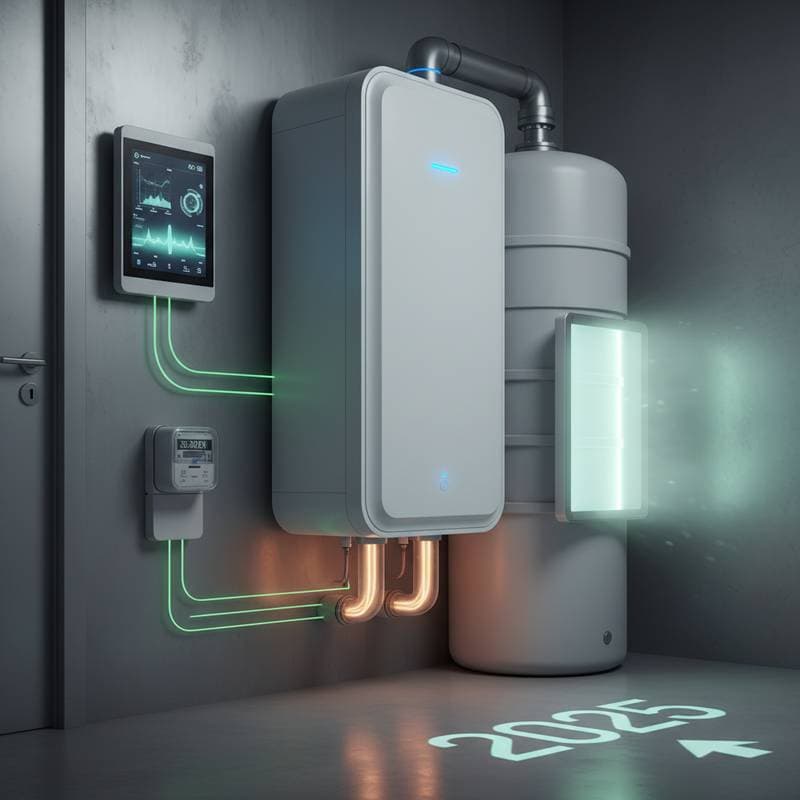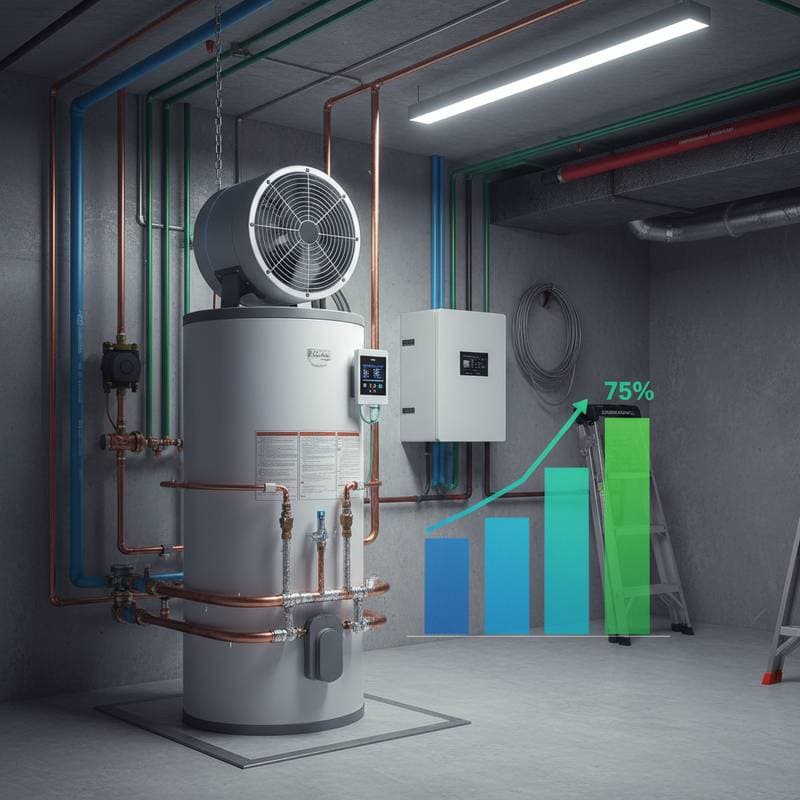Unlocking 300% Efficiency: Heat Pumps in 2025
Homeowners seeking to reduce energy expenses while enhancing indoor comfort will find heat pumps among the most effective options available. The concept of 300% efficiency may appear counterintuitive, yet modern heat pump systems routinely attain this level. This article examines the mechanisms behind their superior performance and explains their emergence as the preferred choice for residential heating, cooling, and water heating.
Understanding Heat Pumps
A heat pump functions by transferring heat energy from one location to another, rather than producing it via combustion or electrical resistance. This device operates similarly to an air conditioner, but in reverse during heating mode. In colder months, it extracts heat from outdoor air or the ground and delivers it inside the home. During warmer periods, the process reverses to expel indoor heat outdoors, providing cooling.
The efficiency advantage arises because the system leverages existing environmental heat. For each unit of electricity consumed to power the compressor and fans, a heat pump can supply up to three units of heat. This coefficient of performance, often abbreviated as COP, underpins the 300% efficiency rating, making these systems far more economical than conventional alternatives.
Factors Driving Heat Pump Efficiency
Conventional heating methods, such as gas furnaces or electric resistance heaters, convert fuel or electricity into heat with a maximum efficiency of 100%. Heat pumps surpass this by employing a closed-loop system of refrigerant that absorbs, compresses, and releases heat. The refrigerant cycles through evaporator and condenser coils, facilitated by a compressor, to achieve this transfer with minimal energy loss.
Several innovations in 2025 models elevate this efficiency further:
- Variable-speed compressors that modulate operation to precisely match demand, avoiding energy waste from constant on-off cycling.
- Low-global-warming-potential refrigerants, such as R-32 or R-454B, which enhance heat absorption and release while complying with environmental regulations.
- Integrated smart thermostats that learn user patterns, adjust for real-time weather data via connected sensors, and optimize runtime for peak performance.
- Enhanced coil designs and insulation that minimize heat loss, coupled with high-efficiency fans that improve airflow without excessive power draw.
These features collectively enable heat pumps to maintain high COP ratings, even in varying conditions, resulting in annual energy savings of 30% to 50% compared to older systems.
Heat Pump Water Heaters: Efficiency for Daily Needs
Heat pump technology extends beyond space conditioning to water heating, where heat pump water heaters (HPWHs) offer substantial benefits. These units draw ambient heat from surrounding air—often from the room in which they are installed—and concentrate it into stored water, bypassing the need for direct electric heating elements.
An HPWH achieves a COP of up to 3.0, meaning it delivers three times the heat energy relative to its electricity input, compared to the 1.0 efficiency of standard electric models. This translates to potential reductions in water heating costs by two-thirds. Optimal placement in areas with temperatures between 40°F and 90°F, such as basements or garages, maximizes performance; in cooler spaces, supplemental electric resistance elements activate automatically.
Initial costs for HPWHs range higher due to advanced components, but rebates and incentives often available through utility programs or government initiatives can shorten payback periods to three to five years. Long-term, these systems lower utility bills and decrease reliance on fossil fuels for hot water production.
Installation Considerations for Heat Pumps
Professional installation remains essential for heat pumps and HPWHs, given the involvement of refrigerant lines, electrical connections, and ductwork integration. A qualified technician assesses home layout, insulation levels, and existing HVAC infrastructure to select the appropriate system size, typically measured in tons or BTUs.
Ducted systems suit homes with central air distribution, while ductless mini-splits provide zoned control for additions or older structures without ducting. For water heaters, compatibility with tank sizes (40 to 80 gallons) and venting requirements must align with local codes. Expect the process to take one to three days, depending on complexity.
Maintenance Strategies for Longevity
Proper upkeep ensures heat pumps operate at peak efficiency and extends their lifespan, which averages 15 to 20 years for air-source models and up to 25 years for ground-source variants.
Follow these routine steps:
-
Inspect and clean or replace air filters every one to three months to maintain unrestricted airflow.
-
Clear debris, leaves, and snow from outdoor units seasonally, ensuring at least two feet of clearance around the coil.
-
Arrange professional servicing annually to verify refrigerant charge, test electrical components, and calibrate controls.
Address unusual noises, reduced output, or icing promptly to prevent minor issues from escalating. Adhering to manufacturer guidelines preserves warranties, often covering parts for 10 years.
Frequently Asked Questions
What is the expected lifespan of a heat pump?
With regular maintenance, heat pumps endure comparably to traditional HVAC systems, delivering dependable operation for 15 to 20 years. Factors like usage intensity and climate influence durability.
Do heat pumps perform in cold weather?
Contemporary cold-climate heat pumps extract heat effectively down to -15°F or lower. In severe extremes, auxiliary heat strips provide supplemental warmth, though rarely needed in optimized setups.
Are heat pump water heaters disruptive in terms of noise?
These units emit a low hum akin to a refrigerator compressor, typically 40 to 50 decibels. Installation in enclosed spaces like utility rooms contains sound, and vibration-dampening pads further reduce transmission.
Will my home require electrical modifications for a heat pump?
Standard installations draw 15 to 30 amps, compatible with most panels. Larger or all-electric systems may necessitate a 200-amp service upgrade; an electrician evaluates capacity during planning.
Steps to Transition to Efficient Heating
Transitioning to a heat pump system yields immediate benefits in energy savings, comfort, and sustainability. Begin by conducting an energy audit to identify inefficiencies in your current setup. Consult certified HVAC specialists who can perform load calculations and present tailored recommendations, including financing options and rebate eligibility.
These upgrades not only cut operational costs but also enhance indoor air quality through advanced filtration and humidity control. Embrace heat pump technology in 2025 to future-proof your home against rising energy prices and environmental demands.





